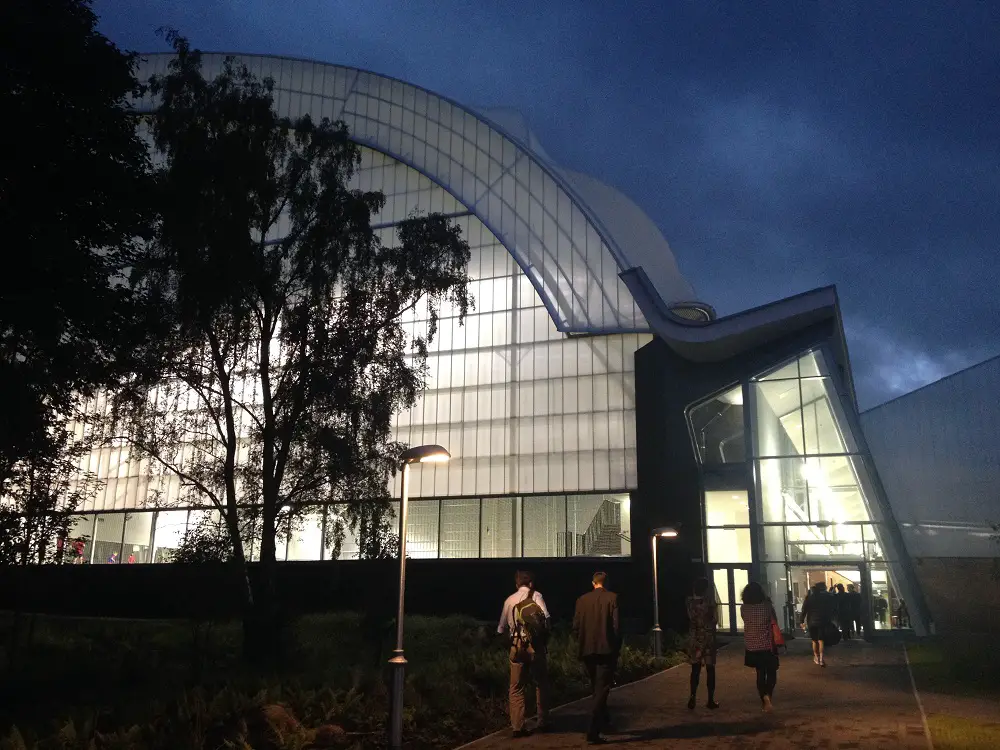A New Chapter Position Statement on RIAS, aNC Scottish Architects News, Governance Review
A New Chapter Position Statement – RIAS: aNC
Scottish Architecture Professional Body News: RIAS Review
1 Aug 2018
RIAS Strategy
Royal Incorporation of Architects in Scotland Strategy
A New Strategy
The RIAS Strategy Group (Chapter representatives) have agreed a timetable for adopting the new five-year strategy and as part of the drive to ensure that members are consulted as widely as possible- each Chapter is doing this in its own way. Some chapters are planning questionnaires to send to members and non members in their areas: others are holding workshops such as the Coarum series organised by the EAA.
Recognising the good work the RIAS already does, the Strategy consultations aim to build on that and establish members views and priorities to develop and clarify the role of RIAS going forward to ensure its relevance in the future to the current, potential and future members.
Future Governance
Working with RIAS Council, the Strategy consultation will investigate a new governance structure for the RIAS, including the role of the President/Council and identify structural changes that can improve the running of the Incorporation and its relationship with the Chapters.
The Timetable
to Nov 18 – membership consultation period
End Nov 18 – bring all the findings together
Dec 18 – prepare and publish findings – draft RIAS Position Statement
Jan 19 – consultation and feedback
Feb 19 – prepare final Strategy
Mar 19 – Final Strategy approval at the Council Meeting
Delivering the Members Priorities
An RIAS Position Statement will be published in draft so that the membership can consider if it reflects the matters it considers are key for the Incorporation in the future.
It is fundamental not only that the final Strategy sets out the RIAS’ values, beliefs and priorities for the future, but to consider how these can be delivered. The Strategy will be supported by a Five-Year Action Plan and these will be reflected in the proposed new annual Business Plans.
28 Mar 2018
A New Chapter Statement on RIAS Reform
A New Chapter Statement regarding Reform within Royal Incorporation of Architects in Scotland (RIAS)
Statement regarding Reform within RIAS
aNC is greatly encouraged by recent moves within the RIAS to implement significant reform measures. These are in line with the changes aNC has been pressing for. We are supportive of the changes proposed and agreed at this week’s Council meeting and welcome the Institution’s willingness to engage and work together for the benefit of the wider membership.
Significant Regime Changes proposed and put in place by Council include:
• New Interim Governance Committee formed to review structural failures in the running of the Incorporation and consider significant reform.
• Interim Audit & Finance Committee formed.
• Council approved RIAS taking the next steps towards reinstating election of the President, subject to membership approval. Any future RIAS President is to be elected by the whole membership, and no longer appointed directly by Council.
• A Governance paper presented to Council highlighted a number of irregularities concerning the way in which Council, and some smaller working groups, had been operating i.e. without the authority of the membership.
• President Stewart Henderson to stand aside to allow a Presidential election in Summer 2018, subject to membership approval.
• 8 non-elected members of Council found to be no longer eligible to sit on Council.
• A Special General Meeting to be called to allow wider members the opportunity to approve interim Bye-Laws.
• Proposed Trustee Annual Report and next year’s budget requires further work before being re-presented to Council for approval.
• Council recognised the need for a frank and honest review of historic decisions and associated failings which should be addressed via an Independent Review.
• AGM may be delayed and, in a departure from tradition, be held separately from the RIAS Convention.
aNC considers the proposed changes and decisions made at Wednesday’s Council meeting to be encouraging. They are in the spirit of greater openness, membership participation, inclusivity and a renewed spirit of optimism.
Supporting notes:
New Committees:
The recently formed Interim Audit and Finance and Governance Committees have been approved by Council and are now in place. Both Committees have already had influence and are making recommendations to Council for long overdue reform. Examples include the presentation of financial information to Council/members via a clear and frank Trustees’ Report and the interrogation/correction/amendment to existing Charter and bye-laws.
Accounts:
Draft 2017 Trustees’ Report/Annual Accounts, 2017 Management Accounts and 2018 Budget were presented to Council. The draft Annual Accounts were preceded by a proposed Trustees’ Report, which was reviewed and discussed at length. The reasons for exceptional governance costs and settlement agreements were noted along with the risk to the Incorporation’s Charitable Status. To provide assurances going forward, the Interim Audit and Finance Committee had implemented an approval process to provide scrutiny of the accounts, their preparation and presentation to the Membership. Council raised several questions concerning the decision-making process and irregularities contained within the Trustees’ Report/Annual Accounts that could not yet be fully explained to the wider membership. Whilst the financial reporting itself is not irregular, the way the RIAS has spent money may be considered to contain some irregularities. It was agreed that the Trustees’ Report would be subject to amendment based on comments raised and additions proposed by Trustees over the coming week. The amended document will be re-issued to Council for approval via email in advance of the forthcoming AGM.
Charter and Bye-laws:
Council members were presented with a Governance paper prepared by Richard Atkins of the Governance Committee in association with Kerr Robertson, Karen Anderson and third-party expert legal opinion. This work highlighted a number of irregularities concerning the way in which Council, and some smaller working groups, had been operating i.e. without the authority of the membership and Privy Council approval (albeit Privy Council do not approve RIAS operating methods). A number of initial proposed measures are being prepared by the Governance Committee to rectify and address these irregularities. These include representation and voting rights on Council and the process for election of the President. For example, Committee Conveners and a number of co-optees are currently not eligible to sit and vote on Council. A Special General Meeting, open to the wider membership, will be called sometime in April 2018 (t.b.c.) to seek approval for the proposed changes.
President’s position:
Stewart Henderson, having seen the papers and its recommendations, said that he had considered his position, recognised that the Incorporation needed to move on and offered his resignation. It was agreed by Council that Stewart should remain in his position until the programme/process for election of the next President was confirmed. It was agreed that the Governance Committee would outline a potential process, programme and procedure leading up to any election and present this to Council for approval. Election of the next President would take place at the forthcoming AGM (date t.b.c – see next item below).
AGM:
In light of the governance and financial issues raised during Council it was agreed that the AGM could not take place on 10th May at the RIAS Conference in Aberdeen. The date and location for this would be agreed in due course once the process for re-election of President, approval of the Bye-Laws (at forthcoming SGM) and approval of the Trustees’ Report to the Accounts had been resolved. It was anticipated that this would be sometime in June 2018.
26 Jan 2018
A New Chapter Position Statement on RIAS
A New Chapter Position Statement on Royal Incorporation of Architects in Scotland (RIAS)
A New Chapter’s Position Statement in relation to ongoing RIAS matters. This covers a range of issues relating to Police/OSCR investigations, proposals to form new Governance/Finance Committees and the current Council/Presidents’ position.
The Position Statement by aNC sits alongside an developing 5-point plan.
aNC Position Statement, 24 January 18
First: we welcome the departure of the former c.e.o..
We also welcome the apparent standing-down of the Governance Review Group – the President’s hand-picked group of himself and ex-presidents which did not, in its 6 months of existence, and despite the last RIAS statement, make any sort of formal report, either to Trustees or the wider membership, whose members may well have been co-opted onto Council by the former c.e.o. despite there being no such vacancies and may well suffer from serious conflicts-of-interest in relation to ongoing reviews.
Finally we welcome RIAS admissions that it has suffered from a “lack of structured governance and accountability”, and that it is investigating governance changes and strategic repositioning and has indicated it may be open to aNC involvement in this, via a “Governance Committee”. However we need to make the following clear:
1. Independent Review: it is a little odd to be invited to submit to attend a new “Governance Committee” when our clear and necessary demands have been unacknowledged and ignored. Principal among them are that the RIAS “carry out an independent, third-party review to investigate and resolve historical issues of concern over governance, accountability and transparency in order to recommend actions for future operations, conduct and governance of the Incorporation”.
2. Governance Committee: nevertheless we extend a cautious welcome to this initiative, in particular as we note its remit, power and the means of accepting its proposals are yet to be clarified. Chair Karen Anderson is, we agree, a respected figure in Scottish architecture; nevertheless she was, again, co-opted onto Council, in the absence of vacancies, by the former c.e.o.. While this does not reflect on her personally it is noted this Committee arises out of the discredited system and will need to work hard to be seen as “independent”. We note this may be assisted if:
. the Committee answers to Trustees, and not direct to the President and/or his inner circle; . it has access to the Probity Review and other reviews;
. it acknowledges the strategic discussions at Chapter level on structural change, sets-out how it’s investigations and proposals will dovetail with theirs and consults widely with all stakeholders;
. it is aware that OSCR and Police investigations might challenge its work;
. aNC involvement with it is based on a recognition of these and all other points here, and that its involvement would depend, and be strengthened by, recourse by representatives to the general group before formally committing to actions.
3. Finances: we are very concerned at the state of RIAS finances, particularly given the free-spending actions of the President’s inner circle on 1. Reviews that are then declared too toxic to take action on, and 2. Lawyers whose briefs are hidden but are responsible only to the President’s inner circle and therefore more likely to be protecting their individual interests than those of the membership organisation paying for them. We also note that RIAS Council contains a “Honorary Treasurer” who is an ex-President and was co-opted into this role by, again, the ex-c.e.o., and has remained, we are told by Trustees, silent on all matters of the RIAS’ current financial position.
4. Change: while we note ongoing discussions within RIAS but also, critically, at Chapter level, we at aNC are clear that change must include: . a President elected by Members, based on manifestos; . executive staff and finance roles separated; . a leaner, executive group of Trustees, with full responsibility assisted by training in their fiduciary responsibilities; . openness, with full sharing of minutes etc; . a refocussed profession, with a move forward from the “learned society” status.
5. a New C.E.O.: we are told that a search has commenced for a new c.e.o.. However, as the R.I.A.S. is in the middle of multiple investigations and consultations, is suppressing the results of the reviews it has so far commissioned and has no agreed way forward, including no discussed or agreed role for separation of executive and finance responsibilities, this is extremely precipitate, and needs to be delayed until a clear role, within a repurposed organisation – that is affordable and commensurate with benchmarked roles elsewhere – is defined.
6. The President: while we believe the seeds of the current major problems have been nurtured by a series of Presidents and, most significantly, brought into full flower by our ex-c.e.o., the scale of the problem has become clear under the present one, and while he has had the opportunity to lead reform he has, instead, reverted to even more extreme levels of secrecy and patronage – the customs and practice that underlay the malpractice in the first place. We also understand that he is not elected and, at the time of his assuming the role, was not on the ARB register (though he did appear to have been holding himself out to be a practicing architect) and would not, therefore, even have been eligible to be a Trustee. We believe he should consider his position and step aside to enable root and branch reform.
7. Trustees: we are also concerned that due to wrongful allegiances, lack of necessary induction procedures and the wilful withholding of information, many Trustees have been negligent in their fiduciary duties. We suggest some continuity is needed at this difficult time but that we may look toward an orderly standing down later this year, with Trustees wanting to resume their roles offering themselves for election with a manifesto.
A New Chapter
Ed. writing in an individual capacity, rather than as an Editor of e-architect, I am impressed by the energy of the aNC group and wish them well.
As some of you may recall I applied for the RIAS Secretary role (ie leading the RIAS) at the same time as Neil Baxter. I was longlisted and alongside Neil was in the final shortlist of two invited to an interview dinner at Rutland Place. Neil was selected shortly after. This had no impact on our continuing support of the RIAS and Scottish architecture and under his reign we continued to feature RIAS press information and promoted their initatives. However our regular invites to events such as the Doolan Prize vanished and repeated enquiries did not elicit any change. We were effectively frozen out, yet still received the digital information.
I am not aware of the details of what has gone wrong, but clearly there seem to have been some significant problems if the Police are involved. I hope that these issues can be speedily resolved and the Scottish architecture community can get back to focusing on procurement which is THE major issue affecting quality of Scottish architecture.
The Scottish Government must focus on improving procurement of good quality buildings and supporting all good architecture practices however small they are. Recent governments of various political colours have favoured the largest practices and have focused too much on costs instead of the overlal picture of what kind of built environment we want to see in our country. Long-term thinking is required.
Adrian Welch, architect
A New Chapter five point plan
Five point plan by A New Chapter
Reform and Action – A five point plan presented by A New Chapter, with the aim of reforming RIAS, supporting architects and championing architecture across Scotland.
To find out more and join in, go to anewchapter.org
1 Unity and Support
— To organise, unite and support architects in their practice for the benefit of society.
— To encourage cooperation and collegiateworking between all parties working within the built environment in Scotland.
— To advocate for the important role that architecture plays within civic life and the economy and embed this within the way design services are procured and delivered.
2 Collaboration and Transparency
— To work collaboratively to foster open-ness and transparency.
— To promote the practice of architecture with a full and active commitment to equality, diversity and inclusivity.
— To broaden the membership through the sharing and exchange of information and ideas.
3 Excellence and Learning
— To achieve and uphold the highest standards in attainment in architecture and discussion relating to the built environment.
— To lead the development and implementation of unique, quality educational and developmental projects related to the physical environment.
— To place ecology, health and well-being at the centre of design and development of the built environment.
4 Federalism and Internationalism
— To promote and represent architects at both local and international level.
— To operate a federal organisation of local chapters
— To foster links with international partners with a distinctive Scottish agenda.
5 Governance and Best Practice
— To represent members, their finances and their interests in an open, transparent and accountable way.
— To operate, manage and lead in a clear and democratic manner.
— To support members in the challenges and opportunities within an ever-changing world.
18 + 17 Nov 2017
RIAS Secretary News
Royal Incorporation of Architects in Scotland (RIAS) – Special Notice
The Royal Incorporation has agreed to the request from our Secretary, Neil Baxter Hon FRIAS Hon FRIBA, to leave the organisation after ten years of service.
Neil will be standing down as of today and the senior management team at the RIAS will continue to deal with all matters relating to the business of the Incorporation.
A New Chapter – Scottish Architects
RIAS Review information received Nov 2017 and approved for publication 10th November 2017
Location: Scotland, UK.
Architecture in Scotland
Scottish Architecture Designs – chronological list
Contemporary Architecture in Scotland – architectural selection below:
The Pyramid Viewpoint on Loch Lomond, Dunbartonshire
BTE Architecture
British Golf Museum and Café, St Andrews
Richard Murphy Architects
Tigh-Na-Cladach,Innellan, Dunoon
Gokay Deveci, Chartered Architect
West Burn Lane, St Andrews
Design: Sutherland Hussey Harris
Scottish Architecture – Selection
RIAS Festival of Architecture 2016
Comments / photos for the A New Chapter Position Statement on RIAS – Scottish Architects News page welcome.





